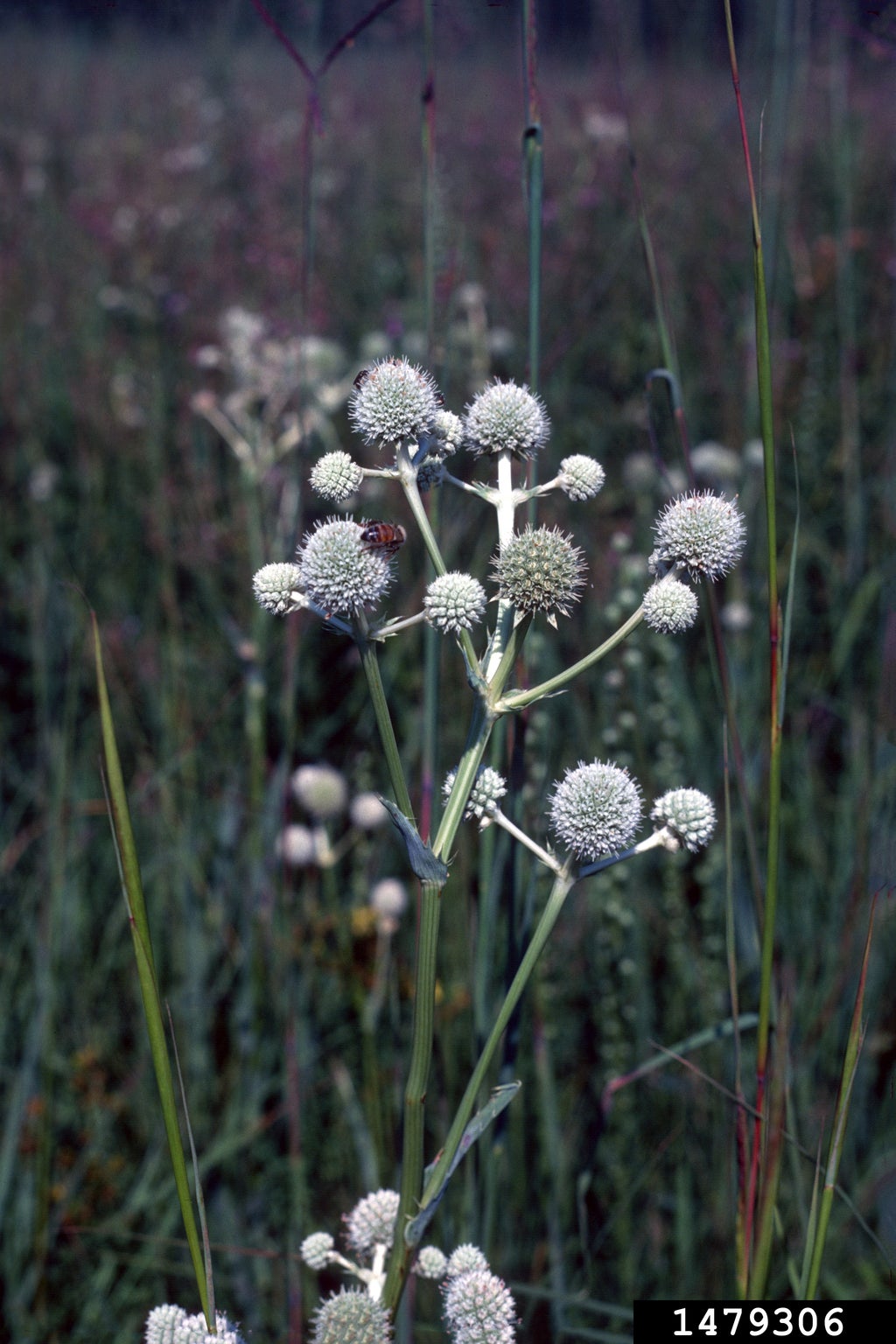Eryngium Rattlesnake Master Info: How To Grow A Rattlesnake Master Plant


Also known as button snakeroot, the rattlesnake master plant (Eryngium yuccifolium) originally got its name when it was thought to effectively treat bites from this snake. Although it was later learned that the plant does not have this type of medicinal effect, the name remains. It was also used by Native Americans to treat other poisonings, nosebleeds, toothache, kidney problems, and dysentery.
Eryngium Rattlesnake Master Info
Eryngium rattlesnake master is an herbaceous perennial, growing in tall grass prairies and open wooded places, where it’s golf ball-shaped blooms (called capitulas) appear atop tall stalks. These are densely covered with tiny white to pinkish flowers from midsummer through autumn.
Foliage is often a greenish blue tint, and the plant may reach 3 to 5 feet (1-1.5 m.) in growth. Use rattlesnake master in native or woodland gardens, planted singly or in masses. Use the plant in mixed borders to provide contrast with its spiky leaves and unique flowers adding texture and form. Plant so it can rise above shorter blooming clusters. If you like, the flowers will remain, although they turn brown, to provide winter interest.
Growing Rattlesnake Master Plant
If you wish to add this plant in your landscape, rattlesnake master seeds are readily available online. It is of the carrot family and hardy in USDA zones 3 through 8.
They prefer growing in average soil. Soil that is too rich encourages the plant to sprawl, as does any condition other than full sun. Plant in early spring and just lightly cover the seed. Once sprouted, this plant prefers dry, sandy conditions. Thin seedlings to a foot apart (31 cm.) or transplant where you’ll use them in your beds.
If you don’t get the seeds planted early, you may chill them for 30 days in the refrigerator, then plant.
Rattlesnake master care is simple, once established. Simply water as needed when rain is scarce.
Sign up for the Gardening Know How newsletter today and receive a free copy of our e-book "How to Grow Delicious Tomatoes".

Becca Badgett was a regular contributor to Gardening Know How for ten years. Co-author of the book How to Grow an EMERGENCY Garden, Becca specializes in succulent and cactus gardening.